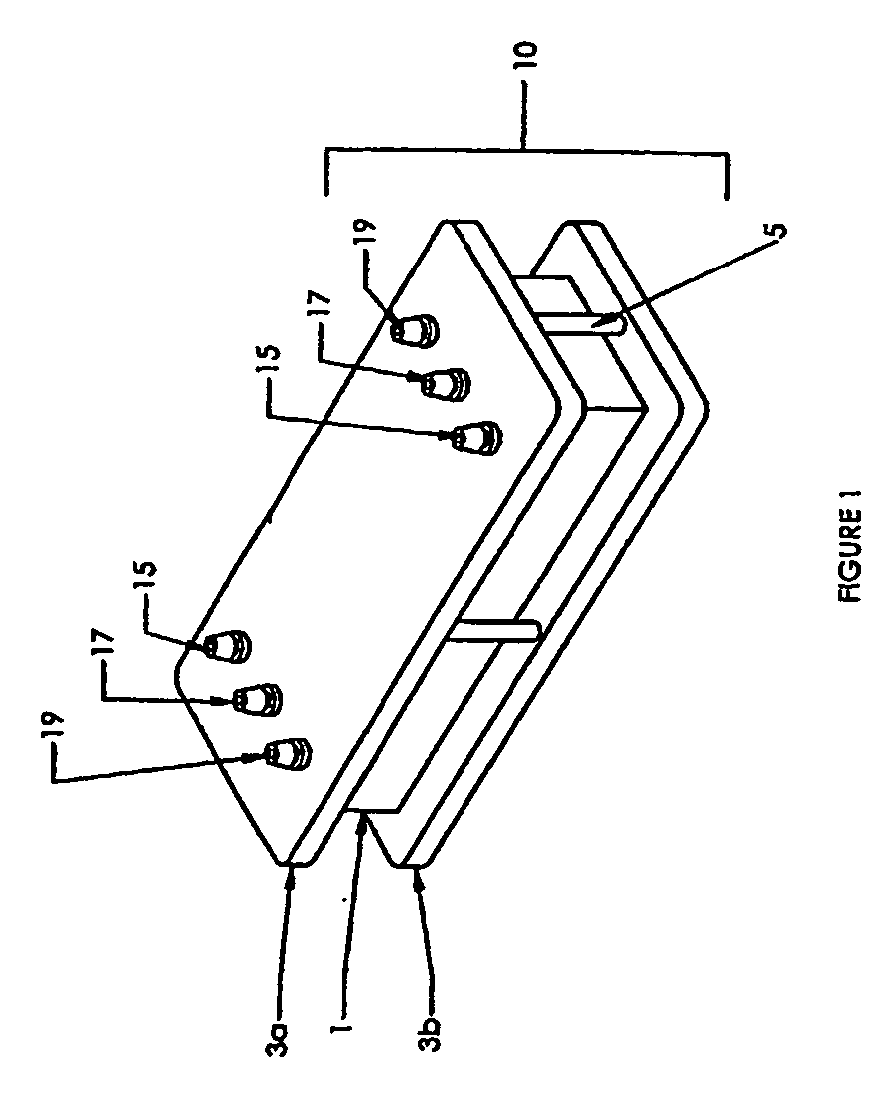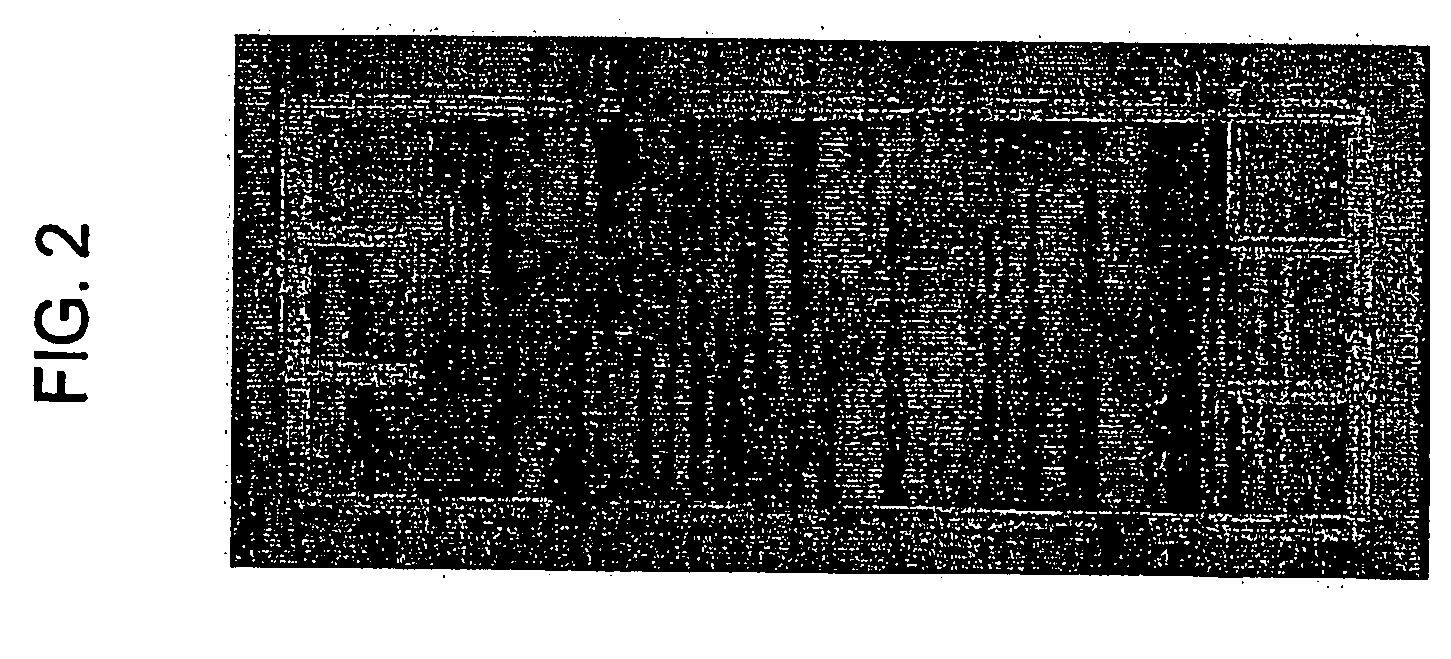Membrane based electrochemical cell stacks
a technology of electrochemical cells and membranes, applied in the field of membrane-based electrochemical cells, can solve the problems of high cost of fuel cells when compared to conventional power generation technology, deterring widespread use, and laborious, and the cost of fabricating and assembling fuel cells can be significan
- Summary
- Abstract
- Description
- Claims
- Application Information
AI Technical Summary
Benefits of technology
Problems solved by technology
Method used
Image
Examples
example 1
2 Cell Stack Performance Data
[0095] Using the ridge and raised channel pattern depicted in FIG. 7, composite MEAs depicted in FIG. 2 were molded from commercial MEAs and silicone resin using the gasket mold depicted in FIG. 3 and FIG. 4. Separator plates were cut from plate stainless steel and flow fields were cut from stainless steel mesh. Each component is depicted in FIG. 10, e.g., two composite MEAs, four flow field screens, one separator plate, and two end plates were assembled in the mold in the following order: end plate, flow field screen, composite MEA, flow field screen, separator plate, flow field screen, composite MEA, flow field screen, and end plate. The assembly was encapsulated with the silicone resin, Silastic, (available commercially from The Dow Corning Corporation of Midland, Mich., USA) by pushing the resin into the sealant holes with a hand dispenser.
[0096] Table 1 shows total voltage, cell voltage, current and current density for the fuel stack assembly abov...
example 2
Standard Injection Molding
[0097] Few changes would be made in the above described scheme to employ automated injection molding. With the use of two part resins (e.g., the silicone used in Example 1), we have shown that the resin can be injected into the channels by a diving pressure rather than pulling a vacuum on the internal ports. For traditional injection molding of a thermoplastic resin, the mold used would have to accommodate the temperature and pressure associated. Molten resin would be injected into the injection holes and around the edges of the assembly, allowed to cool and harden. Injection velocity profile, pack pressure, and cooling time would be optimized to minimize the possibility of component damage as well as to control shrinkage / warpage ensuring sealing of the final part. Lastly, the fuel cell cassette would be removed from the mold.
PUM
| Property | Measurement | Unit |
|---|---|---|
| Partial pressure | aaaaa | aaaaa |
| Partial pressure | aaaaa | aaaaa |
| Pressure | aaaaa | aaaaa |
Abstract
Description
Claims
Application Information
 Login to View More
Login to View More - R&D
- Intellectual Property
- Life Sciences
- Materials
- Tech Scout
- Unparalleled Data Quality
- Higher Quality Content
- 60% Fewer Hallucinations
Browse by: Latest US Patents, China's latest patents, Technical Efficacy Thesaurus, Application Domain, Technology Topic, Popular Technical Reports.
© 2025 PatSnap. All rights reserved.Legal|Privacy policy|Modern Slavery Act Transparency Statement|Sitemap|About US| Contact US: help@patsnap.com



